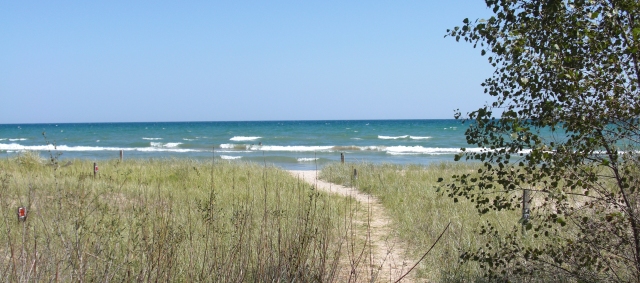Ecological and Socio-Economic Tradeoffs of Hypoxia and Hypereutrophication in the Green Bay, Lake Michigan Ecosystem
Dates: July 18-20, 2017
Leads: J. Val Klump, University of Wisconsin-Milwaukee; Kevin Fermanich, University of Wisconsin-Green Bay; Robert W. Howe, University of Wisconsin-Green Bay
GLERL Research Program: Ecosystem Dynamics
Goals: To develop a decadal scale research plan or framework for the greater Green Bay ecosystem that identifies and defines:
- The state of our current understanding of the functioning of the ecosystem and, most importantly, the gaps in this understanding, the filling of which will be needed for a lasting, cost effective and scientifically robust restoration strategy and plan.
- The fundamental structure of scientific models that include the requisite complexities within the system sufficient to inform management at the appropriate spatial and temporal scales of action.
- The science and research necessary to forecast future conditions in the bay and assess whether currently recommended and future proposed management practices will be sufficient under a changing climate and the massive ongoing alterations in agriculture, urbanization, and development within the watershed.
- The means to translate scientific information into a form that is useable by managers, policy-makers, and others and that will help gage if we are “moving the needle” in improving water quality and ecosystem resiliency and sustainability, while simultaneously addressing economic benefits and costs across the entire system.
Focus Area Objectives:
- The Modeling Framework: Refine and expand a linked model framework to specifically achieve user-operational end-points.
- The Monitoring Framework: Define a monitoring plan that supports measurements aimed at understanding trends in biogeochemical and biological end-points that are driven by climate change and management efforts.
- Stakeholder Engagement Framework: Develop a collaborative working infrastructure of primary stakeholders to test the model framework’s integration within and among specific sectors, e.g., agriculture, municipalities, conservation agencies.
- The Economic Framework: One of the “missing” components to date has been a more rigorous quantification of the economic tradeoffs and cost-benefit analysis of implementing management practices and/or regulatory controls.

Green Bay, Wisconsin. Photo Credit: Bay-Lake Regional Planning Commission.
Products:
- A Green Bay Ecosystem Science Plan outlining recommendations for next steps in research and stakeholder engagement
- A presentation summarizing the Summit to be presented at the State of Lake Michigan Conference to be held in Green Bay in 2017
- A publication summarizing the Summit to be submitted to the Journal of Great Lakes Research, if appropriate. A special section of the journal on Green Bay is currently being planned, and depending on timing a Summit summary manuscript could possibly be incorporated.

